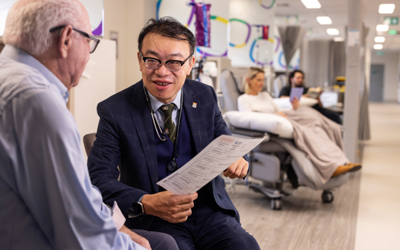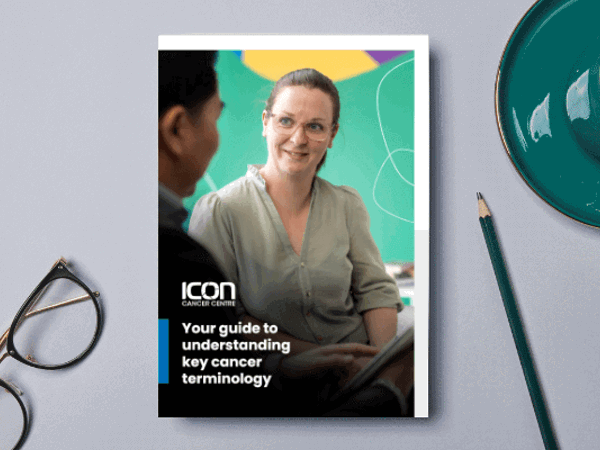
What is cancer & oncology?
Acute refers to symptoms that start and worsen quickly but do not last over a long period of time.
Benign refers to a tumour that is not cancer. The tumour does not usually invade nearby tissue or spread to other parts of the body.
Bone marrow is the soft, spongy tissue found in the centre of large bones where blood cells are formed.
Carcinoma cancer is cancer that starts in skin or tissues that line the inside or cover the outside of internal organs.
Cells are the basic units that make up the human body.
Chemotherapy is drugs that kill cancer cells.
Chronic refers to a disease or condition that persists, often slowly, over a long period of time.
Invasive refers to cancer that has spread outside the layer of tissue in which it started and has the potential to grow into other parts of the body.
A cancer of the blood. Leukaemia begins when normal white blood cells change and grow uncontrollably.
Localised cancer is cancer that is confined to the area where it started and has not spread to other parts of the body.
Lymph nodes are tiny, bean-shaped organs that help fight infection. Part of the lymphatic system.
We cover essential terminology used throughout each stage of your journey, including treatment terms, medical procedures, common side effects, and more.

The lymphatic system is a network of small vessels, ducts, and organs that carry fluid to and from the bloodstream and body tissues. Through the lymphatic system, cancer can spread to other parts of the body.
Lymphoma is a cancer of the lymphatic system. Lymphoma begins when cells in the lymph system change and grow uncontrollably. Sometimes a tumour is formed.
Malignant refers to a tumour that is cancerous. It may invade nearby healthy tissue or spread to other parts of the body.
A lump in the body, can be cancer or benign.
The spread of cancer from the place where the cancer began to another part of the body. Cancer cells can break away from the primary tumour and travel through the blood or the lymphatic system to the lymph nodes, brain, lungs, bones, liver, or other organs.
Primary cancer describes the original cancer.
Prognosis is the chance of recovery; a prediction of the outcome of a disease.
Sarcoma is a cancer that develops in the tissues that support and connect the body, such as fat and muscle.
Secondary cancer describes either a new primary cancer (a different type of cancer) that develops after treatment from the first type of cancer, or cancer that has spread to other parts of the body from the place where it started.
The stage is a way of describing cancer, such as where it is located, whether or where it has spread, and whether it is affecting the functions of other organs in the body.
Tumour is a mass formed when normal cells begin to change and grow uncontrollably. A tumour can be benign (non-cancerous) or malignant (cancerous, meaning it can spread to other parts of the body). Also called a nodule or mass.

The following resources have been developed by Icon to help you gain a better understanding of a cancer diagnosis and treatments.
The content on the Icon Cancer Centre website is for informational purposes only and should not be considered medical advice. It is not a substitute for consultation with a qualified medical practitioner. For personalised medical guidance, please consult with your GP or another qualified healthcare provider.